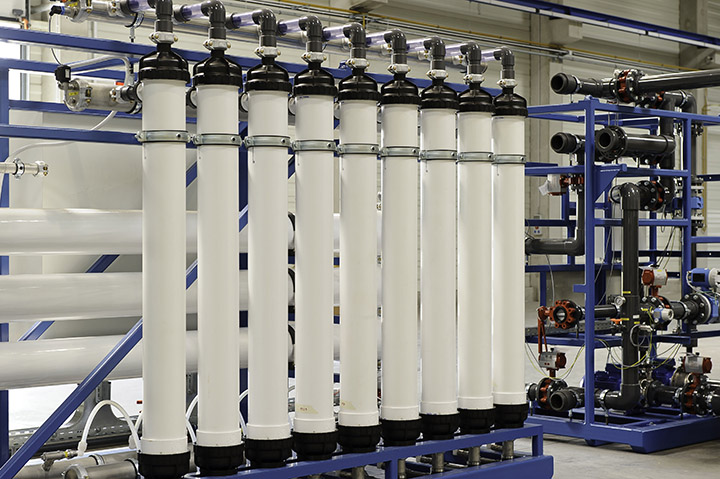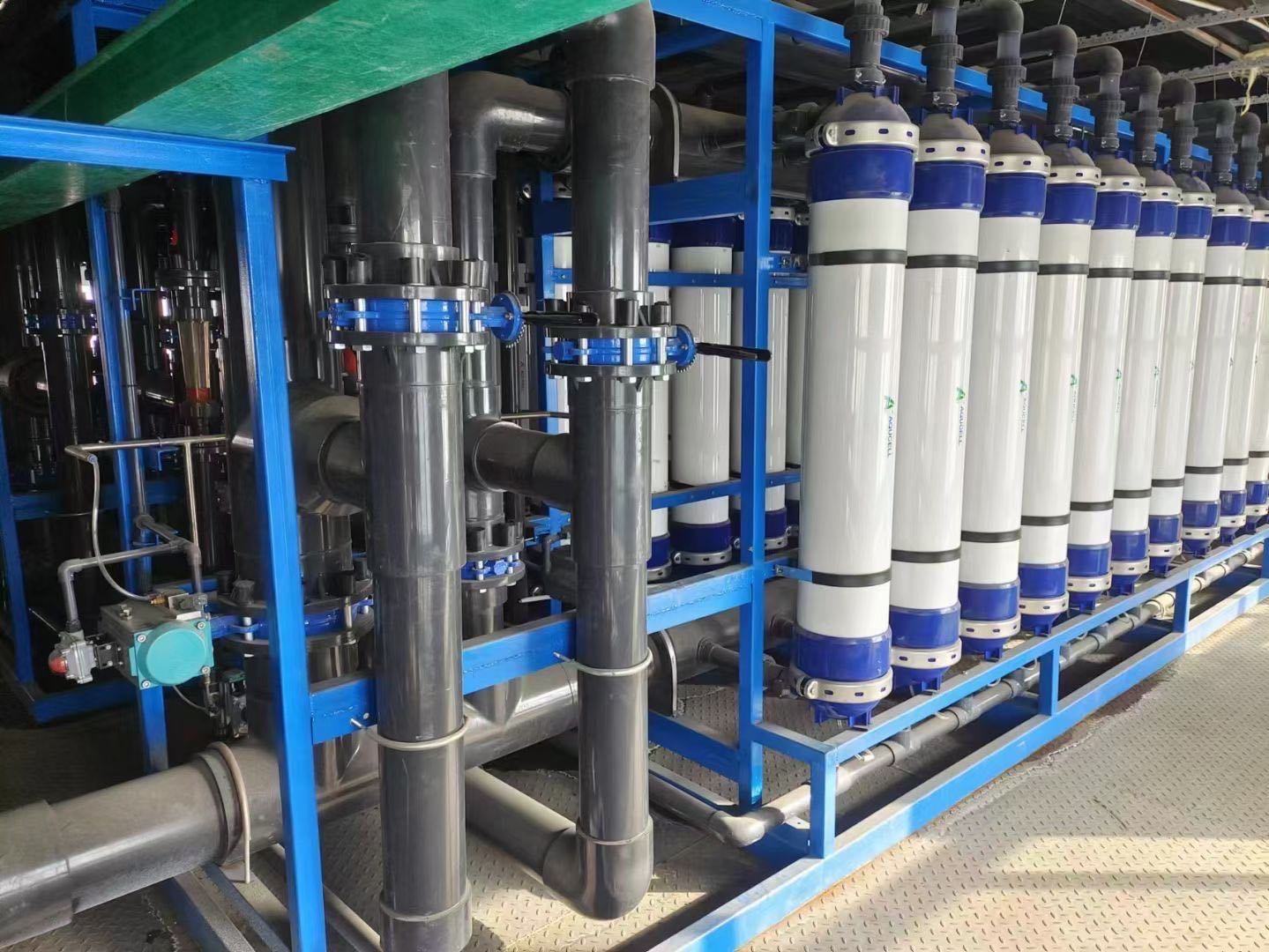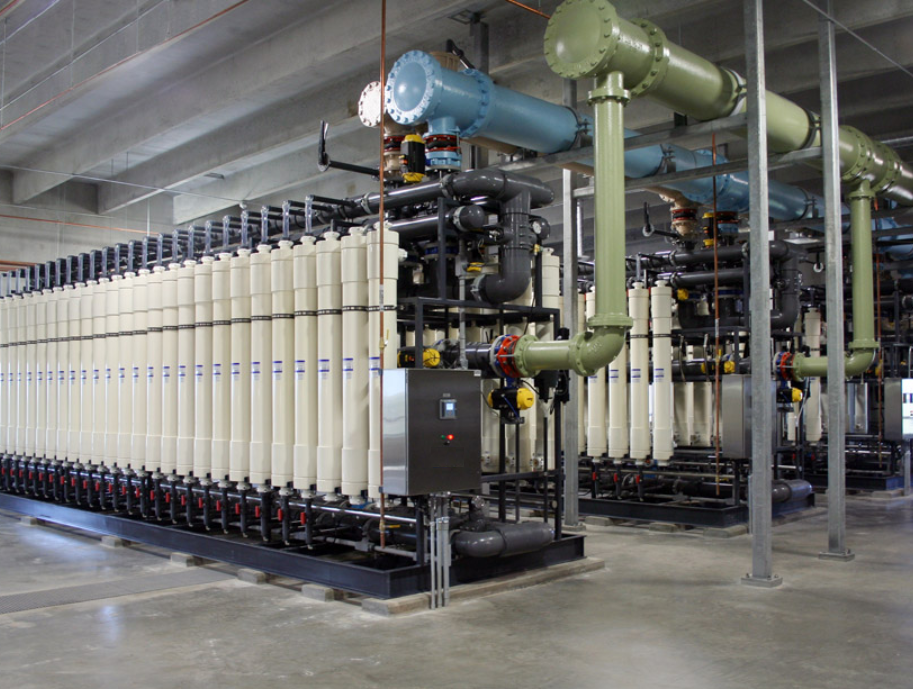What is the hollow fiber membrane in ultrafiltration water treatment?
The hollow fiber membrane in ultrafiltration technology is a key component and plays an important role in industrial water treatment and domestic water filtration. Below we will delve into the definition, use and working principle of hollow fiber membrane in ultrafiltration water treatment.
What is hollow fiber membrane?
Hollow fiber membrane is a porous membrane with a honeycomb-like structure. This membrane is composed of a series of fine hollow fibers with a pore size at the nanometer level. It is usually able to filter out particles such as bacteria, viruses, suspended solids and organic matter in the water, thereby achieving water purification and filtration.
ultrafiltration hollow fiber membrane is widely used in industrial separation fields, especially in the treatment and filtration of drinking water. Industrial water treatment systems are usually equipped with ultrafiltration hollow fiber membranes. These membranes can efficiently remove impurities and pollutants in water and ensure that water quality meets relevant standards.
The domestic water filtration system also uses microfiltration hollow fiber membrane technology. These filtration systems are commonly found in household faucet filters, kettle filters, and filters inside refrigerators and water dispensers. By using hollow fiber membranes, these systems can effectively remove odors, residual chlorine, bacteria and organic matter from the water, providing clean and refreshing drinking water.

What are the characteristics of the preparation and performance of ultrafiltration hollow fiber membrane?
The preparation process of ultrafiltration hollow fiber membrane is a complex process involving material selection, fiber stretching, pore size control and other aspects. Generally, materials used to prepare hollow fiber membranes include polyamide, polysulfone, polycarbonate, etc. These materials have good chemical stability and mechanical strength and are suitable for use in the field of water treatment.
The performance of hollow fiber membrane mainly depends on factors such as its pore size, channel density and surface characteristics. The pore size determines the separation effect of the membrane, which is usually between a few nanometers and tens of nanometers, and can effectively filter out particles and microorganisms in the water. The pore density affects the permeability and filtration rate of the membrane, while the surface characteristics directly affect the anti-pollution ability and service life of the membrane.
In addition to preparation and performance characteristics, ultrafiltration hollow fiber membrane also has some other characteristics, such as good anti-pollution performance, easy operation, and low maintenance cost. These characteristics make ultrafiltration hollow fiber membrane an ideal water treatment and filtration material and are widely used in industry and households.

What are the application cases of ultrafiltration hollow fiber membrane in industrial water treatment?
Ultrafiltration hollow fiber membrane has many successful application cases in industrial water treatment. Below we will introduce several typical cases:
The first is a wastewater treatment project in a chemical plant. The chemical plant produces a large amount of wastewater during its production process, which contains various organic substances and chemical pollutants. By introducing the ultrafiltration hollow fiber membrane system, wastewater can be efficiently filtered and purified, harmful substances can be removed, wastewater can be reused, and environmental protection requirements can be met.
The second is a wastewater treatment project in a food processing plant. Wastewater from food processing plants contains a large amount of organic matter, fat, protein and other pollutants. Traditional treatment methods are difficult to completely remove these pollutants, resulting in poor wastewater treatment effects. By introducing the ultrafiltration hollow fiber membrane system, organic matter and fat in wastewater can be efficiently removed, significantly improving the wastewater treatment effect.
How does hollow fiber ultrafiltration technology work?
The working principle of hollow fiber ultrafiltration technology mainly includes the following aspects:
The first is the filtering process. In the hollow fiber ultrafilter, water passes through the micropore structure of the hollow fiber membrane and is blocked by the surface of the filter, thereby filtering out impurities and particles in the water, leaving only water molecules to pass through, achieving the purpose of purifying water quality.
The second is selective filtering. The hollow fiber membrane has micropores of different sizes, which can selectively remove impurities of different sizes according to the size of the particles. This selective filtration enables hollow fiber ultrafiltration technology to more accurately control the purification effect of water quality.
Finally, there is the reverse osmosis process. During the ultrafiltration process, if the water quality needs to be further improved, reverse osmosis technology can be used to further remove dissolved substances and tiny particles in the water, thereby obtaining purer water quality.

What are the challenges with hollow fiber ultrafiltration technology?
Although hollow fiber ultrafiltration technology has broad application prospects in the field of water treatment, it also faces some challenges. Here are some of the main challenges:
The first is technology cost. The equipment and maintenance costs of hollow fiber ultrafiltration technology are relatively high, which makes it difficult for some regions and enterprises to bear the application and operating costs of this technology.
The second is the problem of membrane fouling. During use, the ultrafiltration membrane may be contaminated by some organic matter and microorganisms in the water, causing the filtration effect to decrease or even fail. Therefore, the ultrafiltration membrane needs to be cleaned and maintained regularly, which increases operating costs and management difficulty.
Finally, there is technical suitability. Hollow fiber ultrafiltration technology is not suitable for all water treatment scenarios. Especially when the water quality is complex and contains high concentrations of pollutants, its filtration effect may be limited, and it needs to be combined with other water treatment technologies for comprehensive application.
How is hollow fiber ultrafiltration different from traditional filtration technology?
Now let us compare the differences between hollow fiber ultrafiltration technology and traditional filtration technology.
Filtering effect comparison:
Compared with traditional filtration technology, hollow fiber ultrafiltration can more thoroughly remove suspended solids, bacteria, viruses and other microorganisms in water, and the filtration effect is superior. Its fine membrane pore structure can achieve precise control of different particles, thereby ensuring the high purity and safety of the produced water quality.
Operation and maintenance cost comparison:
Hollow fiber ultrafiltration technology generally has lower operating and maintenance costs. In comparison, traditional filtration technology may require more chemicals and manpower investment, and has higher operating costs. Therefore, in the long run, hollow fiber ultrafiltration technology is more cost-effective.
Comparison of applicable scope:
While traditional filtration technology is generally suited to coarser filtration jobs, hollow fiber ultrafiltration technology is more flexible and suitable for filtration of a variety of different sizes and types of particles. Therefore, in scenarios where high-precision filtration and high water quality requirements are required, hollow fiber ultrafiltration technology has more advantages.






